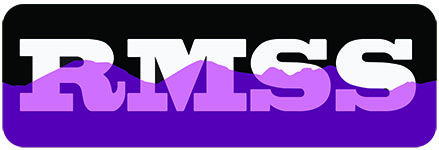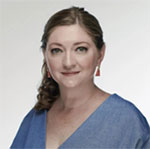 | REBECCA BOYLE - As a journalist, Rebecca Boyle has reported from particle accelerators, genetic sequencing labs, bat caves, the middle of a lake, the tops of mountains, and the retractable domes of some of Earth’s largest telescopes. Her first book, OUR MOON: How Earth’s Celestial Companion Transformed the Planet, Guided Evolution, and Made Us Who We Are (Random House, 2024) is a new history of humanity’s relationship with the Moon, which Rebecca has not yet visited on assignment. Based in Colorado Springs, Colo., Rebecca is a contributing editor at Scientific American, a contributing writer at Quanta Magazine and The Atlantic, and a columnist at Atlas Obscura. She is a frequent contributor to the New York Times, Smithsonian Air & Space, and Popular Science. Her work has appeared in Wired, MIT Technology Review, Nature, Science, Popular Mechanics, New Scientist, Audubon, Distillations, and many other publications. Rebecca will be presenting "Our Moon: How Earth’s celestial companion transformed the planet, guided evolution, and made us who we are" |
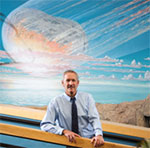 | DR MARK BOSLOUGH - Mark Boslough received his Ph.D. in Applied Physics, with studies in geophysics, at Caltech. He was a member of the technical staff at Sandia for more than 30 years specializing in physics, geophysics, computer science, and national security applications. He now splits his time between Los Alamos National Laboratory and University of New Mexico, working on planetary defense and planetary science projects and modeling the effects of asteroid impacts and airbursts. Dr. Boslough will be presenting "Myths, Misinformation, and Pseudoscience about Planetary Impacts: What can we do about it?" and "The Risk from Cosmic Airbursts: Explosions in the Sky and Fire on the Ground" |
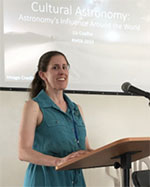 | LIZ COELHO - Will we ever return rock samples from Mars to Earth? Will we ever see lava flowing on Venus? These questions and more will be covered in this overview of solar system exploration with highlights on recent robotic missions such as ESA’s BepiColombo, NASA’s Juno and CNSA’s Chang’e 6. Liz Coelho is Astronomy Department Chair at Pikes Peak State College and the State Discipline Chair for Astronomy within the Colorado Community College System. Liz has a BA in Astronomy & Physics from Boston University and an MS in Astronomy from San Diego State University. Besides being an astronomy enthusiast, Liz is an avid knitter, crocheter, mountain biker and martial artist. She is currently working on the Astronomical League’s Messier Observing Program and hopes to complete it in less than 5 years! Liz will be presenting "Solar System Exploration" |
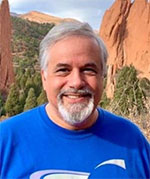 | JON GROUBERT - Jon Groubert is a former attorney and lifelong amateur astronomer. He bought his first telescope, a Criterion RV-6 equatorial Newtonian, with money he saved up from his paper route when he was 13 years old. About 10 years ago, while living in Manhattan, he started a blog called "Light-Polluted Astronomy." One of the absolute first things he did when he moved to Denver eight years ago was to join the DAS, literally while unpacking the boxes around his new apartment. He has worked at Mile High Astronomy ever since its grand opening in 2018, which spelled the death of the blog. He was the Chair of the VNHA Scholarship Fund Committee for 5 years. He currently lives in Arvada with his lovely wife, dog, two cats, and five telescopes: three refractors, a Mak, and an SCT. In his presentation he will cover: • Telescope equations in order to understand focal lengths, magnification • Magnification and field-of-view for different types of eyepiece/telescope combinations • Astronomical "seeing" – especially here on the front range – and empty magnification • Standard eyepieces that typically come with a new telescope (what they can/can't do) • Kellners, Plossls, and Erfles - what they do, how much they cost • Barlows and zoom eyepieces - what they do, how much they cost • Fancy-schmancy eyepieces - what are you paying for, are they worth it? • Differences between apparent field-of-view (AFOV) and true field-of-view (TFOV) • Eye relief for eyeglass wearers who suffer from more than mild astigmatism • 1.25" versus 2" eyepieces – what are the advantages? • Better correction/better contrast – do you care? |
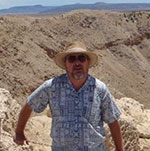 | BRUCE BOOKOUT - Bruce Bookout is a Program Manager with Peraton Inc, where he manages the Acusil Thermal Protection System program and is a life-time member of the Colorado Springs Astronomical Society (CSASTRO). As a CSASTRO member, he has served in numerous roles in the club, including Vice-President, RMSS Director (for 7 years), Deputy Outreach Coordinator and is currently both the Co-Lead for the Long Range Planning Committee and the Astronomical League Coordinator (ALCOR). Bruce is an Adjunct Professor of Astronomy at Pikes Peak State College where he developed their course in Archeoastronomy, besides teaching Planetary and Stellar Astronomy. He is the only CSASTRO member to be awarded the Astronomical League Master Observer's Award (so far). Bruce has a MS in Space Systems Operation from Webster University and previously served in the US Air Force as a Space Operations officer. Bruce will be presenting a "Night Sky Tour". |
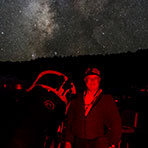 | RICK ANGELL - Rick started out as a cowboy, in New Mexico and Colorado. Mercury, Gemini and Apollo were important influences on his adolescence. He came of age the year we landed on the Moon. In high school, Rick fell in love with the Constitution and decided to make his way as a lawyer. His wife, Rev. Debra Angell, their three children and Rick built a loving, active family. They built a successful law practice. As both grew, he found friends who led him back under those spangled, black, velvet skies he first saw as a cowboy. Rick’s current interests in astronomy focus on showing others what fascinates him in the night sky and sketching what he sees in his eyepiece. As Rick says: “I am an old man now. My soul is, yet, stirred by those skies that enchanted me, as a boy.” Profile photo by Bob Vixie. RIck will be presenting “Sketching What is Seen Through the Eyepiece”. |
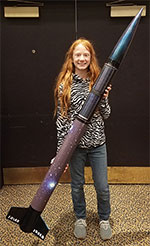 | LILLY FURMAN - Lilly is a 7th grade student at Kewaskum Middle School in Wisconsin. Her hobbies other than Astronomy include playing violin and bassoon, running cross country and track, and robotics. Lilly will be presenting "Recreational Time in Space". |
